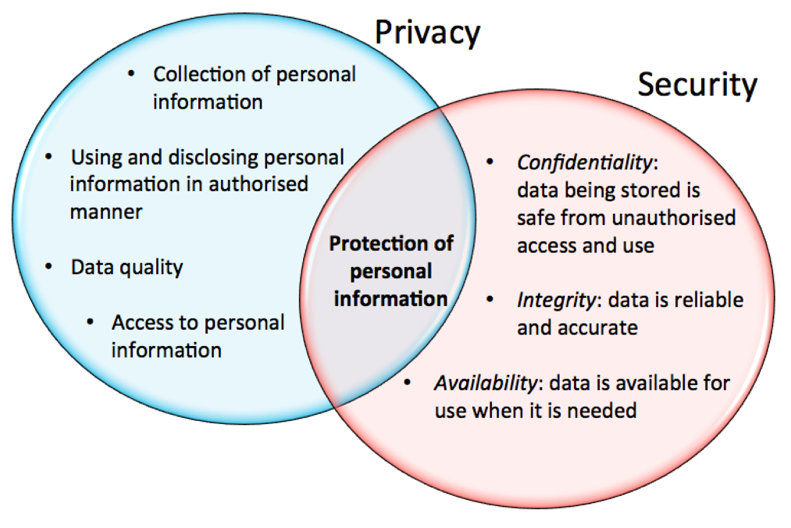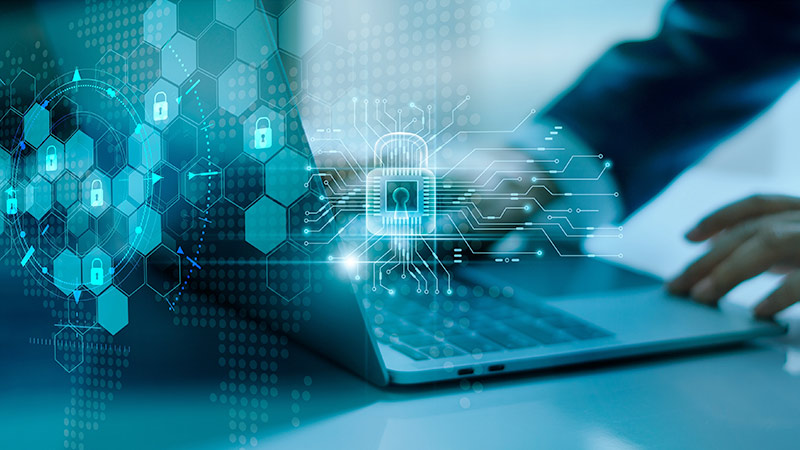Data and Network Security: Key Strategies to Safeguard Your Digital Infrastructure
Wiki Article
The Essential Role of Data and Network Safety in Shielding Your Details
In a period where information violations and cyber hazards are significantly common, the significance of robust information and network protection can not be overstated. Organizations should not only secure delicate details yet likewise make sure conformity with advancing governing criteria. The execution of effective security measures, such as encryption and access controls, is crucial to maintaining trust and operational integrity. The landscape of cyber dangers is continuously shifting, elevating inquiries regarding the adequacy of current techniques and what brand-new techniques may be essential to remain ahead of potential hazards. What lies ahead in this intricate safety atmosphere?Comprehending Data Safety
In today's digital landscape, a frustrating majority of companies grapple with the intricacies of information safety. This critical element of infotech entails safeguarding delicate data from unapproved accessibility, corruption, or theft throughout its lifecycle. Information security includes numerous strategies and innovations, consisting of encryption, gain access to controls, and information masking, all aimed at securing details against breaches and vulnerabilities.A basic aspect of data safety is the recognition and category of data based upon its level of sensitivity and importance. This classification assists companies prioritize their security efforts, assigning resources to secure one of the most critical information successfully. In addition, implementing robust policies and procedures is vital to make sure that staff members recognize their duty in maintaining data security.
Routine audits and evaluations help in recognizing possible weak points within a company's data safety and security framework. Additionally, employee training is vital, as human error remains a substantial consider data violations. By promoting a culture of safety and security awareness, companies can minimize dangers related to insider hazards and neglect.
Value of Network Safety
Network safety and security stands as a cornerstone of a company's general cybersecurity technique, with approximately 90% of organizations experiencing some type of cyber risk in the last few years. The value of network safety and security hinges on its capacity to secure sensitive details and preserve the honesty of service operations. By guarding network facilities, organizations can stop unauthorized accessibility, data violations, and various other malicious activities that can threaten their assets and reputation.Implementing durable network security gauges not just helps in mitigating threats but additionally fosters depend on among clients and stakeholders. When customers are ensured that their financial and individual information is protected, they are extra likely to involve with the company, resulting in boosted customer loyalty and service growth.
Additionally, a well-structured network security framework assists in conformity with various regulative demands. Organizations has to stick to market requirements and lawful mandates worrying information defense, and effective network safety and security techniques can make certain compliance, thus preventing prospective fines.

Typical Cyber Threats
Organizations should stay alert versus a range of cyber dangers that can threaten their network safety efforts. Among the most usual risks is malware, which encompasses infections, worms, and ransomware that can disrupt procedures, steal data, or hold details hostage. Phishing strikes, where malicious stars impersonate trusted entities to trick individuals into disclosing sensitive info, remain to grow in refinement, making user education and learning critical.One more widespread hazard is dispersed denial-of-service (DDoS) assaults, which overload systems with website traffic, rendering them not available to reputable users. Expert dangers, whether willful or unintentional, posture significant dangers as workers might inadvertently expose sensitive information or purposefully exploit their gain access to for destructive objectives.
In addition, susceptabilities in software and hardware can be made use of by cybercriminals, highlighting the value of normal updates and patch administration. Social design techniques better make complex the landscape, as aggressors control people right into divulging confidential information through psychological manipulation.
As these risks develop, organizations should maintain a proactive method to identify, mitigate, and respond effectively to the ever-changing cyber threat landscape, protecting their valuable information and maintaining trust fund with stakeholders. fft pipeline protection.
Ideal Practices for Defense
Carrying out robust safety and security steps is vital for safeguarding delicate info and preserving operational honesty. Organizations needs to start by conducting comprehensive threat evaluations to identify susceptabilities within their systems. This positive method enables the prioritization of protection efforts tailored to the specific requirements of the organization.Adopting solid password policies is essential; passwords need to be complicated, frequently changed, and handled using safe and secure password administration devices. Multi-factor authentication (MFA) includes an additional layer of security by needing additional confirmation methods, hence decreasing the threat of unauthorized accessibility.
Regular software application updates and patch administration are crucial to secure against understood susceptabilities. Executing firewall programs and invasion discovery systems can even more secure networks from outside hazards. Worker training is just as important; personnel needs to be educated on acknowledging phishing efforts and understanding the significance of information security procedures.
Information security need to be used for sensitive information, both at rest and en route, to make sure that also if information is obstructed, it continues to be hard to reach (fft pipeline protection). Lastly, organizations must develop and routinely test event reaction plans to guarantee swift action in the event of a safety and security breach. By sticking to these finest practices, companies can boost their protection pose and safeguard their vital data properties
Future Trends in Protection
The landscape of data and network safety and security is continually advancing, driven by innovations in innovation and the increasing refinement of cyber dangers. As organizations increasingly adopt cloud computer and IoT gadgets, the paradigm of protection will change toward a zero-trust model. This technique highlights that no entity-- inner or outside-- is inherently relied on, mandating verification at every accessibility point.In addition, the usage of expert system and artificial intelligence in safety and security methods is on the surge. These innovations make it possible for predictive analytics, permitting organizations to determine susceptabilities and potential dangers before they can be made use of. Automation will likely play a pivotal function in simplifying safety and security feedbacks, reducing the moment required to minimize breaches.
Furthermore, governing frameworks will remain to tighten up, necessitating a lot more rigorous compliance steps. Organizations has to stay abreast of developing guidelines to guarantee they meet safety and security requirements.

Final Thought
In conclusion, the importance of information and network protection can not be overstated in the contemporary digital landscape. With the frequency of cyber threats and the enhancing complexity of regulative needs, companies must embrace thorough security steps to secure delicate details.In a period where information fiber network security breaches and cyber threats are increasingly common, the value of durable information and network protection can not be overemphasized. Information protection encompasses various strategies and technologies, including encryption, access controls, and data masking, all aimed at protecting information against breaches and vulnerabilities.
A fundamental facet of information protection is the recognition and category of data based on its sensitivity and significance.The landscape of data and network security is continually evolving, driven by advancements in modern technology and the raising refinement of cyber dangers.In verdict, the importance of information and network security can not be overstated in the contemporary electronic landscape.
Report this wiki page